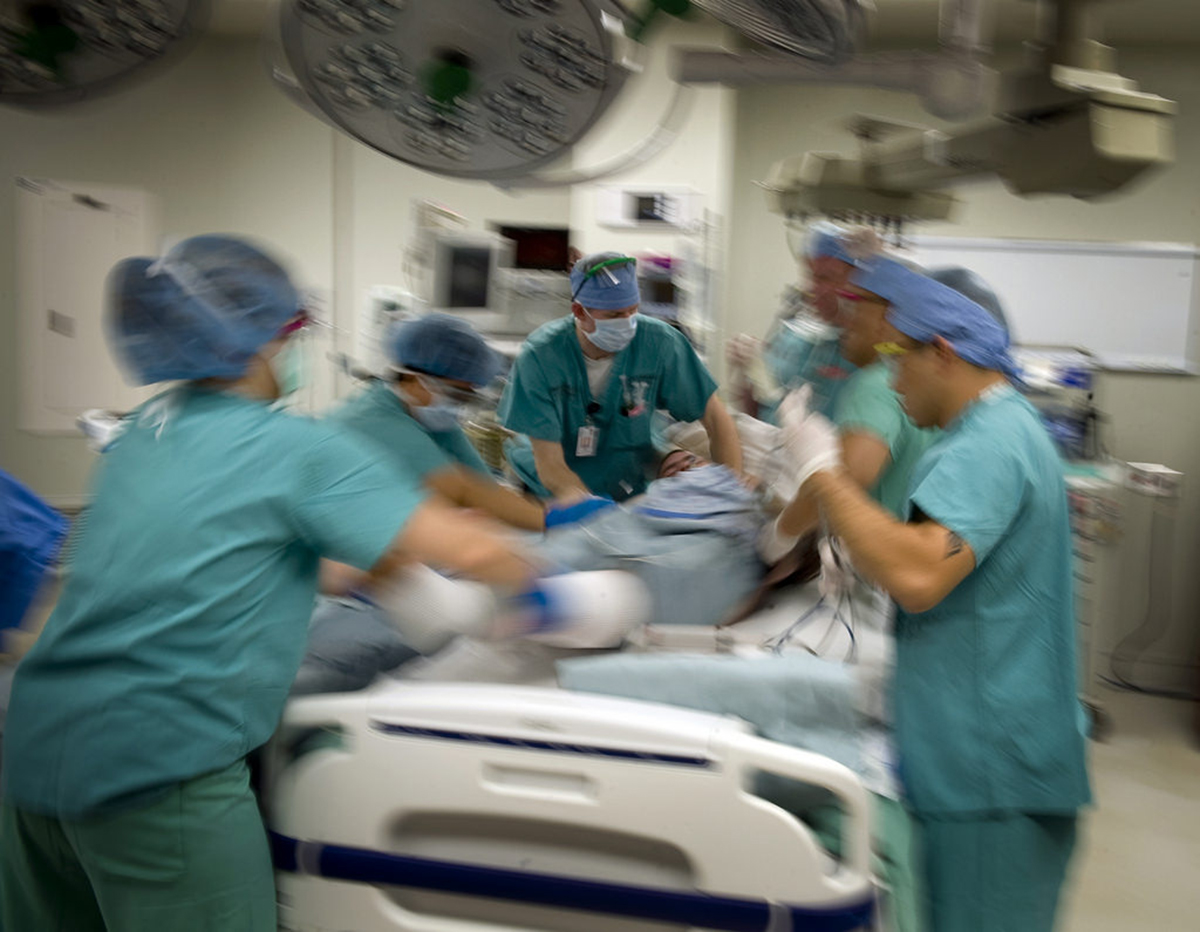Table of Contents
A team of researchers at Pennsylvania State University and MIT thinks they may have the solution to the problem of misplaced cells. It's not possible to pick up individual cells even with tiny forceps, but it may be possible to move them around with a device they are calling "acoustic tweezers."
Tens of millions of science fiction fans know the character Dr. Who who does amazing things with his "sonic screwdriver." While the fictional sonic screwdriver can melt steel doors and move space ships, the now very real acoustic tweezers can move materials to precise locations on a microscopic level.

The holy grail of 3-printing has been printing organs made from human cells. The raw materials for 3-D organs would not, at least in theory, be that hard to acquire. Even in adults, a patient's stem cells could be used to make mass quantities of the kinds of cells needed to make an organ. Certain kinds of tissues have already been 3-D printed, although the connective tissue from a cadaver organ (which won't be rejected when it is transplanted) has to be used for the scaffold on which the cells are placed.
Using Gentle Vibrations to Make Tissues and Organs from Single Cells
Acoustic tweezers technology uses gentle vibrations to create pressure gradients that move cells into the places they need to be in 3-D printed human organs. These vibrations involve very, very tiny amounts of energy, less than one ten-millionth of the power that would be exerted by a low-power laser. Using a kind of ultrasound, the acoustic tweezers can move individuals cells without touching them, without contamination, and without the need for complex procedures to label them prior to placing them into an organ. They have no effect on cell viability, functionality, or genetic expression. The device has no moving parts, and does not have to set up for each use. It can move a single cell into position in an organ, sequencing billions of cells into a three-dimensional configuration.
What's Special About Acoustic Tweezer Technology and How Can It Be Used?
The breakthrough that makes acoustic tweezers possible is an understanding of sound patterns in terms of three dimensions instead of just two. The tweezers produce nodes, areas of minimum pressure, and antinodes, areas of maximum pressure. Like a miniature weather system, these nodes and antinodes can be moved so that the can position objects in three dimensions.
One of the major pluses of the technology is that it can use a variety of cells without having to sort them previously. This is a major breakthrough for 3-printing of organs, but there are many other potential uses.
- Studying the 3-D architecture of an a 3-D printed cancerous tumor, to see how the tumor grows and spreads.
- Understanding how organs remodel themselves after injuries, repairing gaps and broken connections caused by trauma or disease.
- Understanding how organs use stem cells even in adulthood to fight the ravages of aging.
- Cleansing the blood that has to be recirculated into the body during long, complex surgeries in which transfusion cannot keep up with bleeding. During bypass surgery, blood from the surgery is collected from the thoracic cavity and sent back into circulation, but it can pick up fat particles that can cause stroke. Acoustic tweezer technology may be able to remove these fat particles from recirculated blood. This technology may also make it possible to compensate for bleeding during surgery without any transfusions at all.
READ Kidney Transplantation as an Option for Kidney Failure
- Eliminating diseases transmitted in blood transfusions.
- Eliminating problems with blood group incompatibility during blood transfusions.
- Removing microorganisms from the blood to treat septicemia.
- Removing inflammatory compounds or clotting factors from the blood in a living patient.
- Printing neural networks to regenerate nerve function or even for brain regeneration.
Proof of concept for this technology has been achieved. Real benefits from acoustic tweezer technology are coming soon.
- Guo F, Mao Z, Chen Y, Xie Z, Lata JP, Li P, Ren L, Liu J, Yang J, Dao M, Suresh S, Huang TJ. Three-dimensional manipulation of single cells using surface acoustic waves. Proc Natl Acad Sci U S A. 2016 Jan 25. pii: 201524813. [Epub ahead of print] PMID: 26811444.
- Photo courtesy of militaryhealth: www.flickr.com/photos/militaryhealth/21802497841/
- Photo courtesy of taylorherringpr: www.flickr.com/photos/taylorherringpr/22139606410/
- Photo courtesy of taylorherringpr: www.flickr.com/photos/taylorherringpr/22139606410/


Your thoughts on this